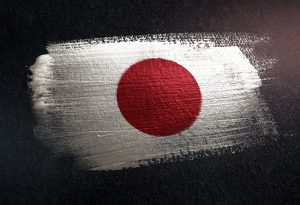Japanese Prime Minister Kishida Fumio canceled plans to travel to Kazakhstan, Uzbekistan, and Mongolia following an unprecedented earthquake warning from the Japan Meteorological Agency (JMA).
“I have decided to stay in the country for the next week or so to ensure our preparations and communications are in order,” Kishida said at a press conference on August 9.
On August 8, the JMA issued its first “megaquake” advisory, covering 29 prefectures along Japan’s Pacific coast. It is the first such warning under an alert system that was rolled out in 2019 as part of the Japanese government’s extended response to the 2011 triple disaster.
As Japan Today explained, “The current alert system came into effect in 2019, as the government sought to establish a way to put the public on alert for potential earthquakes despite the difficulty of predicting when one might strike. There are two alert levels – the lower advisory advises people to be prepared to evacuate, while the higher warning advises those in danger-prone areas to start evacuating.”
The current alert urges preparation, but did not call for evacuations.
The advisory stretches from Okinawa in the far southwest all the way up to Ibaraki prefecture, north of Tokyo, and came after a magnitude-7.1 earthquake in the Nankai Trough off Miyazaki Prefecture. There appears to be little widespread damage, but experts have urged caution and preparedness.
The JMA’s advisory, issued after an expert panel met, warned that “if a major earthquake were to occur in the future, strong shaking and large tsunamis would be generated.”
“The likelihood of a new major earthquake is higher than normal, but this is not an indication that a major earthquake will definitely occur during a specific period of time,” it continued.
Naoshi Hirata, professor emeritus at the University of Tokyo and chief of the JMA panel, said at a news conference, “We can’t tell exactly when or where a megaquake will occur, but we want people to reaffirm their preparedness.”
Experts noted that the Nankai Trough has a history of paired large earthquakes. The Nankai Trough is a roughly 900 kilometer-long trench on the ocean floor overlying the Nankai megathrust, where the Philippine Sea Plate is being subducted under Japan, which sits on the Eurasian plate.
The 1707 Hoei earthquake ruptured the entirety of the Nankai Trough and triggered Mount Fuji’s last eruption. At an estimated magnitude of 8.6, it was Japan’s largest recorded earthquake until 2011’s magnitude 9 Tohoku earthquake, which triggered a powerful tsunami that, in turn, caused the Fukushima Daiichi nuclear disaster. The 2011 triple disaster resulted in more than 18,000 deaths.
Previously, the Japanese government has warned that the Nankai Trough’s next 809 magnitude quake had a roughly 70-80 percent probability of striking sometime in the next 30 years.
Located on the Pacific “Ring of Fire,” Japan is one of the world’s most earthquake-prone nations. The country sits at the confluence of four major tectonic plates and experiences around 1,500 earthquakes a year, most of them small and inconsequential. Nevertheless, as the 2011 experience made abundantly clear, the potential for a massive earthquake is very real and could have devastating consequences.

































